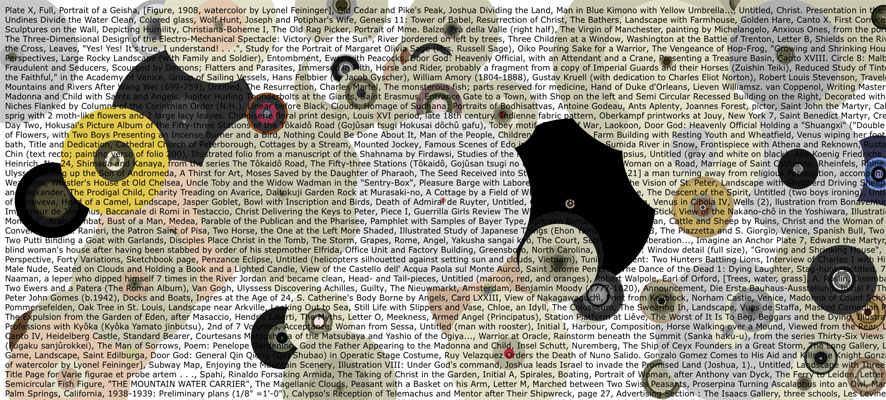Leah Burgin and Andrea Ledesma, two graduate students in Brown University’s public humanities program, recently published the essay “How We Learned to Stop Worrying and Love Open Data: A Case Study in the Harvard Art Museums’ API.” The pair had become interested in the project after taking a course that touched on museum collections and their evolution over time. They were inspired to research the Harvard Art Museums’ collections in part because of the museums’ application programming interface (API)—a digital communication system that enables individuals to interact with raw data and explore, integrate, and create new applications from that information.
The API gives users open access to information about the approximately 250,000 objects in the museums’ collections. It’s not just an incidental perk; the API draws from the same data that powers the museums’ website and many other facets of the institution. Examples of applications built with the API thus far include the museums’ own Art Explorer, Museums Explorer, and the color-centric Suns Explorer.
With limited technical backgrounds, Burgin and Ledesma initially had reservations about working with this powerful resource. “There was a steep learning curve,” admitted Burgin. “My first question was actually, ‘What is an API?’ I think a lot of people are at that point.”
But once the pair started working directly with the API, after reviewing the museums’ guidelines and other online resources, they were hooked, Burgin said. She and Ledesma are among the nearly 100 users of the Harvard Art Museums’ API since the initial version was created in 2013.
Standout API
Burgin and Ledesma chose the Harvard Art Museums’ API, they said, because it offered more information than what was found in peer institutions’ resources. Beyond a work’s artist, title, and creation date, the Harvard Art Museums’ API also includes records related to publication history, exhibition history, and online page views.
“A lot of the data represents the intense scholarship of the curatorial divisions,” said Jeff Steward, the museums’ director of Digital Infrastructure and Emerging Technology. “Page views and other statistics are folded in to show that the objects have richer lives than one might think. Even if an object is not on view in the museums, it is still used in many other ways.”
For their case study, Burgin and Ledesma examined a selection of the objects in the collections: 94 sculptures from the 14th century. By delving into data, they discovered nuggets of information that aren’t apparent from simply viewing the works, such as the year most 14th-century sculptures were acquired (1943, when 24 objects joined the collections) and from which parts of the world most of these works hailed (France, followed by Thailand, and then Japan).
Future Applications
Now that their project is complete, Burgin and Ledesma are interested in taking a deeper look at collecting patterns—why and how certain items were accessioned during specific time periods, for instance.
They would also like to build more meaningful experiences for users of the museums’ collections. “We’re thinking about how to use what we learned from the API in a way that benefits not only the Harvard Art Museums but also their audiences,” Ledesma said.
The museums hope that people will continue to use our API to develop innovative and enlightening projects like this one. Interested in seeing what you can discover? Get started on your own research here.



